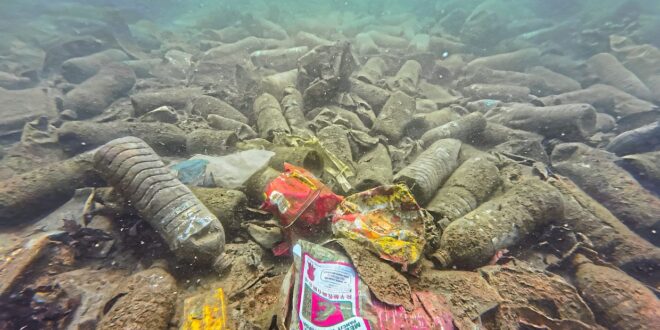PETALING JAYA: Microplastics that are consumed, mostly through seafood, stay in the body and could negatively affect human health, say environmental experts.
Environment and waste management expert Dr Theng Lee Chong said scientists have found that the interaction of microplastics in human bodies mostly through ingestion and inhalation can produce various kinds of toxicity, depending on the types of microplastics.
“Microplastics are external contaminants that enter our body systems, and are not likely to be excreted.
“As such, it will stay in our body for the rest of our life and possibly cause various kinds of health impacts in the long-run,” he said.
This, he said, included adverse impacts to human hormones, reproduction systems and even development of cancer.
However, he said that according to the World Health Organisation, more holistic research is needed to obtain an accurate assessment of exposure to microplastics and its potential impact on human health.
Theng said to minimise the risk of microplastic intake, it is important that consumers enhance their knowledge of the sources of microplastics.
“For example, seafood, especially shellfish, has the highest potential for microplastics. Teabags also contain microplastics, as well as synthetic fibre clothing,” he said.
He advised consumers to read product labels to ensure it is free of plastic or microbeads.
He said consumption habits may be the most difficult to shape as it attempts to change common practices or people’s lifestyle.
“For example, people may still want to eat lobsters even if they know it may contain high concentrations of microplastics,” he said.
Theng added that the government’s policy and intervention is crucial to address the issues of microplastics and its impact.
“This can be done through more effective control on product specifications, product packaging and ban of certain specific high-impact products, and continuous awareness creation.”
Theng also said that the government must make rational decisions, with proven and scientific-based research, instead of decisions that are business oriented.
He said that treatment and disposal capabilities could also be improved to minimise leakages of microplastics into the environment, which can be done through a stringent regulatory framework on pollution.
Universiti Teknologi Malaysia senior lecturer Dr Nina Diana Nawi said microplastics are generated from various sources, especially from human activities.
“For example, from the creation of products, management of homes and offices, unsustainable waste management, sports activities, vacations, marine activities, shipping and sailing.
“These are significant sources of microplastics found in waters.”
She said industrial areas, residential and densely populated cities are the top contributors of microplastics in freshwater systems.
Meanwhile, anthropogenic activities, such as food packaging, laundry, use of household products, fishing, surface coatings and car tyre debris contribute to microplastics in seawater.
Nina said microplastics are transferred to the sea through rain, pollution and sewage, and the marine life will consume these microplastics, which are later eaten by humans.
She added that primary sources of microplastics involve micro-sized plastics produced by industries, such as the manufacturing of toothpaste, facial cleansers, fishing lines, toys and cosmetics.
 BeritaKini.biz Berita Viral Terkini di Malaysia
BeritaKini.biz Berita Viral Terkini di Malaysia





